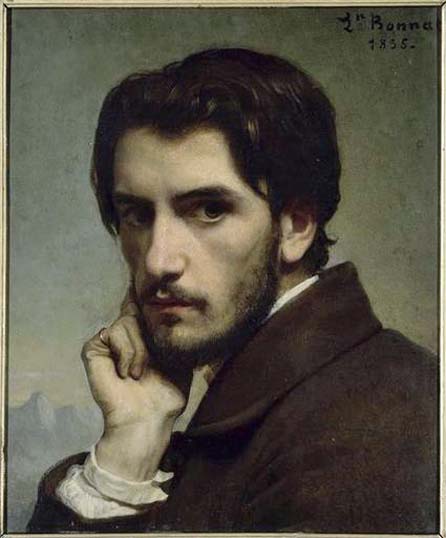

Portrait of the Artist
This is a page about an artist but it is also a study that I hope goes far beyond a single individual. Léon Bonnat throughout his career painted portraits of some of the most influential and distinguished individuals of the era and society in which he lived and experienced. I have attempted, where I could find it, to provide further background information of many who made their way to Bonnat's Canvas. I claim no originality in the work I have done. There is nothing here that could not be found elsewhere on the internet. All of my pages have been journeys of self exploration and learning that continue to bring joy to a retired teacher who suffers from Multiple Sclerosis. There are always alternatives to be found when you find yourself homebound.
Senex Magister
The Martyrdom of Saint Denis: ca 1880
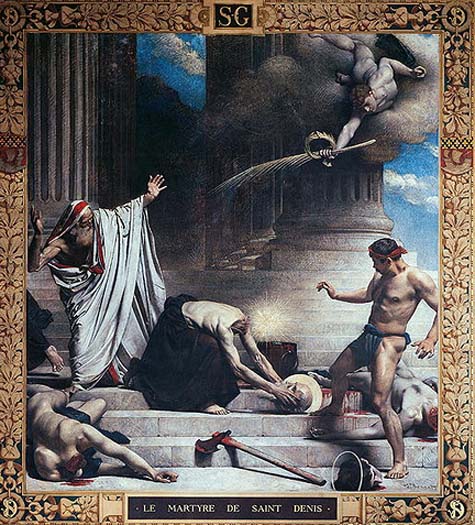
Various Works of Leon Bonnat
(These are not in any order of priority or genre other than showing you the bredth of Bonnat's Work.) - Senex Magister
Adolphe Thiers
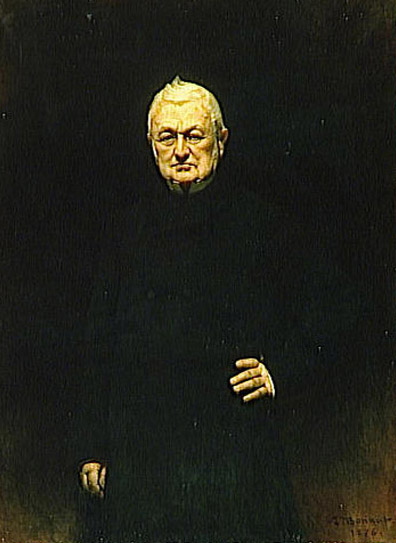
Louis-Adolphe Thiers was a French politician and historian. Thiers was a Prime Minister under King Louis-Philippe of France. Following the overthrow of the Second Empire he again came to prominence as the French leader who suppressed the Revolutionary Paris Commune of 1871. From 1871 to 1873 he served initially as Head of State (effectively a provisional President of France), then provisional President. When, following a vote of no confidence in the National Assembly, his offer of resignation was accepted (he had expected a rejection) he was forced to vacate the office. He was replaced as Provisional President by Patrice MacMahon, duc de Magenta, who became full President of the Republic, a post Thiers had coveted, in 1875 when a series of constitutional laws officially creating the Third Republic were enacted.
Alexandre Dumas, fils (1824 - 1895)
.jpg)
Alexandre Dumas, fils was a French author and dramatist. He was the son (fils) of Alexandre Dumas, père, also a writer and playwright.
Dumas was born in Paris, France, the illegitimate child of Marie-Laure-Catherine Labay, a dressmaker, and novelist Alexandre Dumas. During 1831 his father legally recognized him and ensured that the young Dumas received the best education possible at the Institution Goubaux and the Collège Bourbon. At that time, the law allowed the elder Dumas to take the child away from his mother. Her agony inspired Dumas fils to write about tragic female characters. In almost all of his writings, he emphasized the moral purpose of literature and in his play 'The Illegitimate Son' (1858) he espoused the belief that if a man fathers an illegitimate child then he has an obligation to legitimize the child and marry the woman.
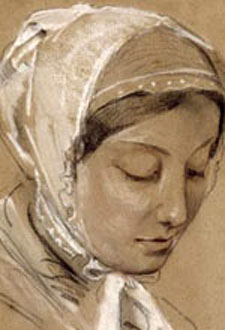
Marie-Laure-Catherine Labay
Dumas' paternal great-grandparents were a French nobleman and a Haitian woman. In boarding schools, Dumas fils was constantly taunted by his classmates. These issues all profoundly influenced his thoughts, behavior, and writing.
During 1844 Dumas moved to Saint-Germain-en-Laye to live with his father. There, he met Marie Duplessis, a young courtesan who would be the inspiration for his romantic novel 'The Lady of the Camellias'. Adapted into a play, it was titled in English (especially in the United States) as Camille and is the basis for Verdi's 1853 opera, La Traviata. Although he admitted that he had done the adaptation because he needed the money, he had a great success with the play. Thus began the career of Dumas fils as a dramatist, which was not only more renowned than that of his father during his lifetime but also dominated the serious French stage for most of the second half of the 19th century. After this, he virtually abandoned writing novels (though his semi-autobiographical L'Affaire Clemenceau (1867) achieved some success).
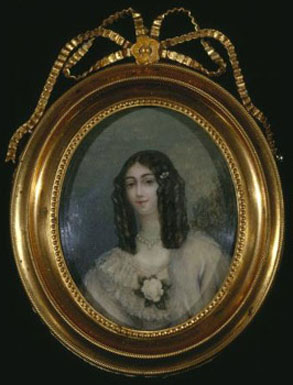
Marie Duplessis (Cameo Portrait): 1847
During 1874, he was admitted to the Académie française and in 1894 he was awarded the Légion d'honneur.
Alexandre Dumas fils died at Marly-le-Roi, Yvelines, on November 27, 1895 and was interred in the Cimetière de Montmartre in Paris. His grave is, perhaps coincidentally, only some 100 meters away from that of Marie Duplessis.
An Arab removing a thorn from his foot
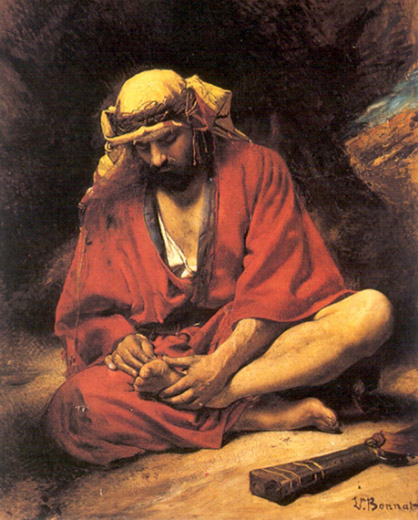
During the 19th Century an interest in the Levant and the entire Islamic World began to develop among Europeans which would also spread to the Western Hemisphere. I think it was probably in part the 'Mystery' and for most an unknown life and culture that the Near and Middle East presented to the West even though the West has attempted to interfer with that 'World' resulting in consequences that have benefitted no one. That is the tragedy when any people begin from an ethnocentric view of the world. The following is an introduction I found on the internet: Orientalist Art of the Nineteenth Century. Leon Bonnat was one of these European Artists
Senex Magister
Orientalist Art of the Nineteenth Century
In July of 1798 Napoleon marched into Egypt with an army. He defeated the Turks at the Battle of the Pyramids, stayed for a year and then was driven out by the British. In the small amount of time that he was there he managed to do what he did best: he changed everything.
Battle of the Pyramids
by Francois-Louis-Joseph Watteau
Arabe enlevant une epine de son pied

In the Mountains: 1870
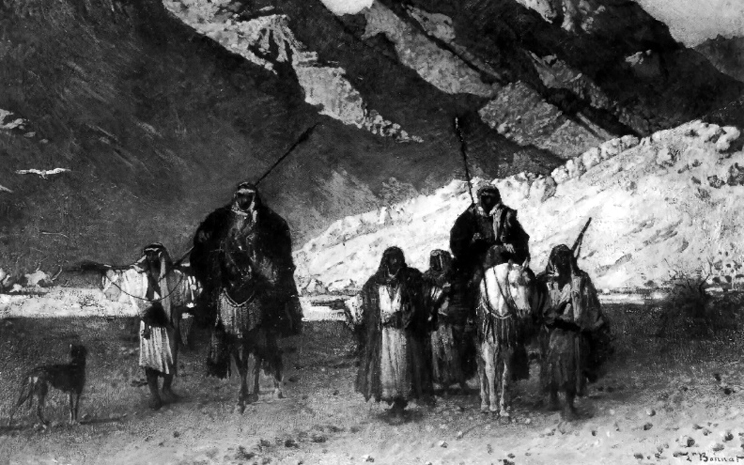
Arabian Sheikhs in the Mountains: 1872
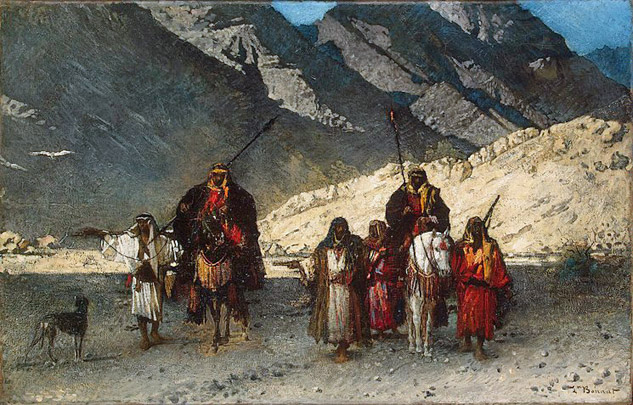
An Egyptian Peasant Woman and Her Child: 1869-70
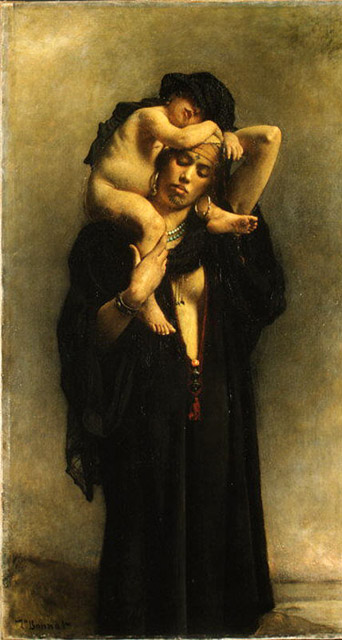
An Egyptian Peasant
Exhibited at the Salon of 1870, this painting was recognized as an important departure from the historical and mythological works Bonnat had shown previously. It is based on a full-length oil study (Musée Bonnat, Bayonne) that Bonnat painted during a trip to Egypt in 1869. Soon afterwards, Bonnat began devoting himself exclusively to portraiture. A few years after it was painted, this picture was illustrated on the cover of the American art review, "The Aldine," and included in the 1876 Centennial Loan Exhibition at the New York Historical Society.
Nude - Orientalist
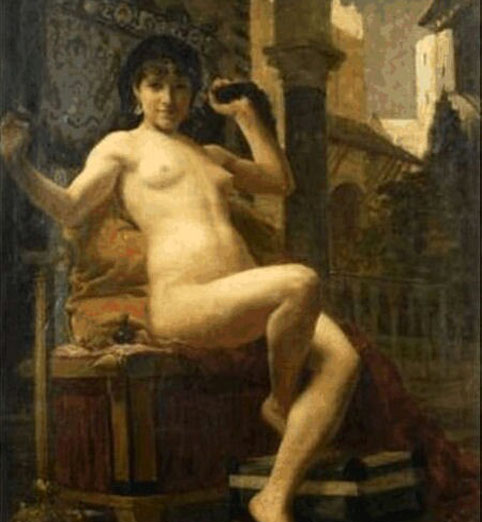
Antoine Francois Marmontel

Antoine François Marmontel was a French pianist, teacher and musicographer.
Marmontel entered the Paris Conservatory in 1827. His teachers were Pierre Zimmerman in pianoforte, Victor Dourlen in harmony, Jacques Fromental Halévy in fugue and Jean-François Le Sueur in composition. He achieved first prizes in theory of music and piano. In 1837, he became an assistant in theory of music at the Conservatory. In 1848 he succeeded Zimmerman as Professor of Keyboard at the Conservatory, beating off his former teacher Charles-Valentin Alkan, and as a consequence derailing the latter's career. His memoir of his sometime colleague in his book 'Les pianistes célèbres' is nonetheless one of the most valuable sources for Alkan's biography.
Marmontel achieved renown as an effective and imaginative teacher. He had many pupils including Georges Bizet, Vincent d'Indy, Théodore Dubois, Ernest Guiraud, Émile Paladilhe, Edward MacDowell, Gabriel Pierné, Louis Diémer, Francis Planté and Claude Debussy.
Self Portrait of the Artist

Self Portrait: 1858
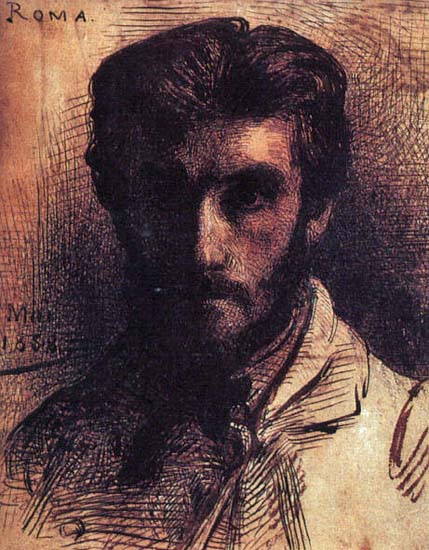
Portrait de L'Artiste

Portrait de L'Artiste au Chapeau
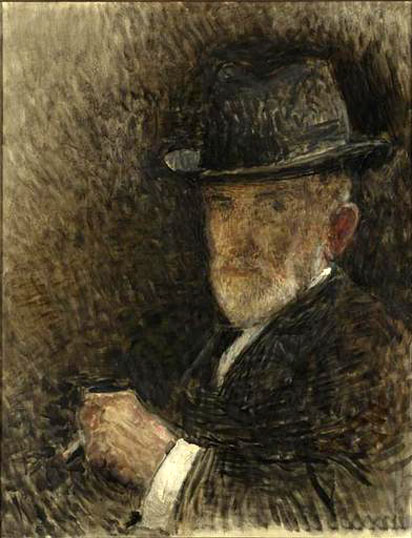
Bernier Louis
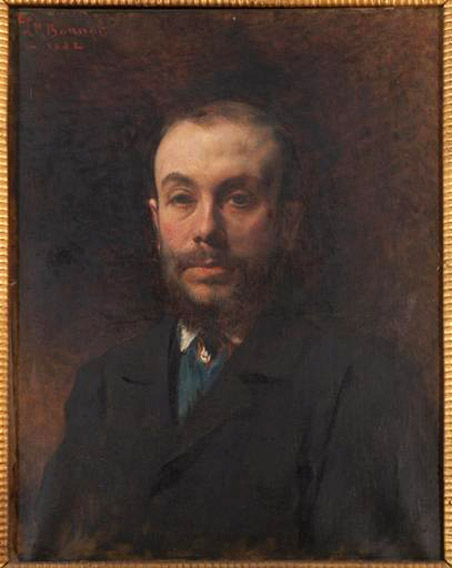
Ciociara: 1859
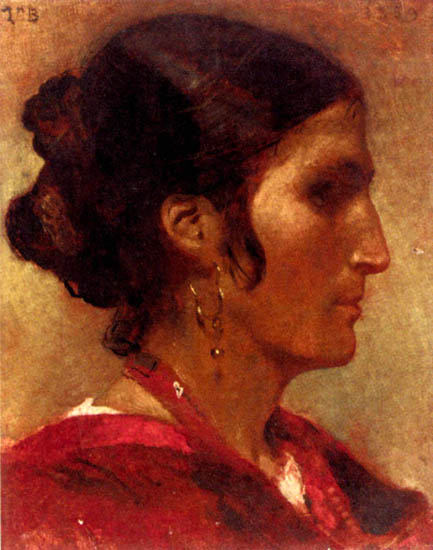
Femme Nue, Agenouillee
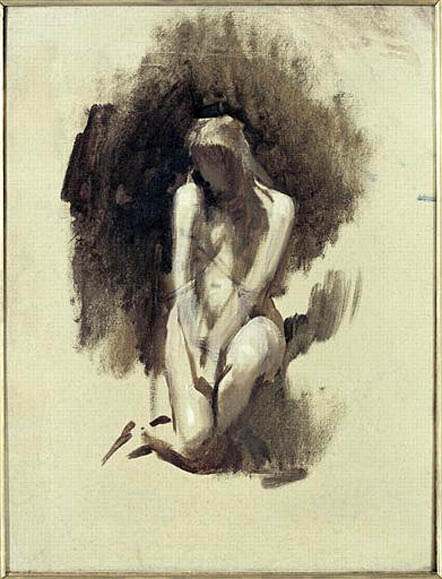
Filette endormie: 1852
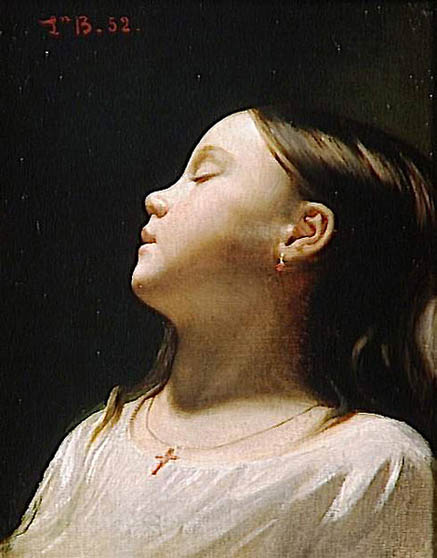
Fountain by the Cathredral of Staint Peter in Rome: 1868
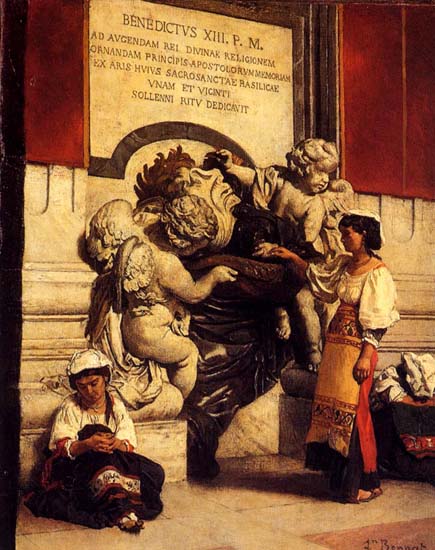
French Priest Pierre-Bienvenu Noailles (1793-1861): 1899
_1899.jpg)
Pierre-Bienvenu Noailles
Born in Bordeaux in 1793 at the height of the Terror that followed the French Revolution, Pierre Bienvenu grew up in a closely-knit family surrounded by loving brothers and sisters. He was a lively child and had a turbulent adolescence. A brilliant young man who succeeded at everything he undertook, he could have had a great career in a number of professions. But God entered his life and another unexpected destiny was offered him.
A merciful God revealed himself to Pierre Bienvenu as the only source of happiness. This conversion led him to Paris to the seminary of Issy at the age of twenty three. A few days before that he received, in the church of Saint Sulpice, a very special grace of discernment and detachment that helped break the last vestiges of resistance that held him back. From that moment it is hard to say whether God or Pierre Bienvenu sought the other more diligently.
At the Seminary he took the call to holiness addressed to all the baptized very seriously. He often contemplated the Holy Family whom he referred to as "the lovely image of the Trinity". It was in this intimate dialogue with Jesus, Mary and Joseph that he discovered his spiritual identity. It can be summed up in one phrase that constitutes the core of the founding charisma he was to receive: Seek God Alone in all things like Jesus, Mary and Joseph. Pierre Bienvenu cultivated that precious grace, the call to renew the Church of his time, to present to the world a God who was near and a Church with a 'family face', something for which the first Christian communities have left us a taste.
Inspired by God he conceived the plan of a vast Society, something very new for his time. It would welcome within its fold women and men of all conditions and vocations (contemplative and apostolic women religious living in community, consecrated seculars, lay people committed in the world, married or single, children and adults, priests). Engaged in the work of proclaiming the Good News, they would all apply themselves to imitate the Holy Family. By their union in diversity they would demonstrate that communion among all is possible, that it is the vocation of the church and the world to be and to build the family of the children of God.
After being ordained priest on June 5, 1819 in the Church of Saint Sulpice, Father Noailles returned to Bordeaux to his home diocese. He became curate in the parish of Saint Eulalie where his apostolic zeal in all circumstances, his love of the poor and his qualities of discernment made him an exceptional priest much sought after for spiritual direction. He gathered together young people and adults for catechesis and allowed all to share in his work.
He organized them according to the needs and the talents of each one. To all he gave the same instructions: to imitate the virtues of the Holy Family. His project was in the hands of God, to whose will he was constantly attentive. It took root officially when, with the encouragement of his Bishop, Mgr. d'Aviau, he assembled in community three young girls who felt the call to give themselves to God in a new way. In their poverty and their destitution they welcomed orphans poorer than they.
An extraordinary favor gave momentum to the first community. Twenty months after its foundation God gave a visible sign of his comforting presence. During Benediction of the Blessed Sacrament on February 3, 1822 the figure of Jesus appeared in the monstrance blessing those present in a most kindly manner. This event, seen by many credible eye witnesses who concur in their accounts, was duly authenticated by the ecclesiastical authorities
For forty years, despite many obstacles, Fr. Noailles presided over the destiny of the Holy Family, perfecting his work and drawing up Rules and Statutes. At a time when the role of women in French society was restricted he managed to attract and obtain the collaboration of outstanding women, lay and religious, to whom he gave real responsibility.
When he died on February 8, 1861, the Holy Family was not alone in mourning him. The whole of Bordeaux was saddened. On the day of his funeral a large crowd accompanied him to the cathedral. All felt they had lost a friend and father but gained a saint.
The reputation for holiness that Father Noailles had during his lifetime continued to spread. On February 8, 1988 the Church confirmed the holiness of his life and declared him Venerable, the first step on the road to canonization.
His holiness showed itself in the ordinary actions of everyday life and in his constant and burning desire to conform his life to that of the Holy Family which he had so often contemplated. "Jesus, Mary and Joseph who loved, sought and desired God alone here below" were his models. This contemplation blossomed in availability to serve, in goodness and love of the poor so that the orphans, the poorest of the poor, called him the Good Father.
George Martin Lane: 1894
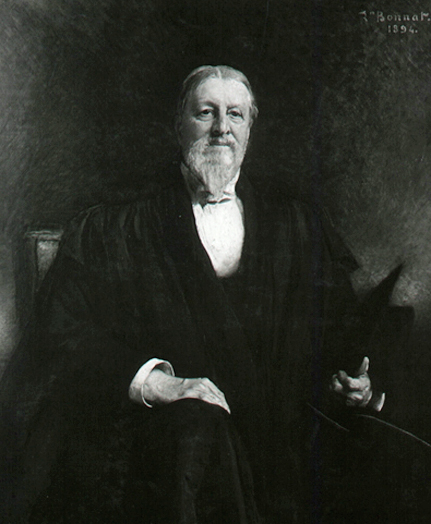
George Martin Lane
George Martin Lane, American scholar, was born at Charlestown, Massachusetts.
He graduated in 1846 at Harvard, and in 1847-1851 studied at the Universities of Berlin, Bonn, Heidelberg and Göttingen. In 1851 he received his doctor's degree at Göttingen for his dissertation 'Smyrnaeorum Res Gestae et Antiquitates', and on his return to America he was appointed University Professor of Latin in Harvard College.
From 1869 until 1894, when he resigned and became professor emeritus, he was Pope Professor of Latin in the same institution. His Latin Pronunciation, which led to the rejection of the English method of Latin pronunciation in the United States, was published in 1871.
His Latin Grammar, completed and published by Professor Morris H. Morgan in the following year, is of high value. Lane's assistance in the preparation of Harper's Latin lexicons was also invaluable. He wrote English light verse with humor and fluency, and his song "Jonah and the Ballad of the Lone Fishball" was famous.
Upon Lane's retirement 1n 1894, Harvard granted him an honorary degree as well as the first pension it had ever granted a faculty member; which, according to Lane, was enough to support him for the rest of his life.
Girl Sitting
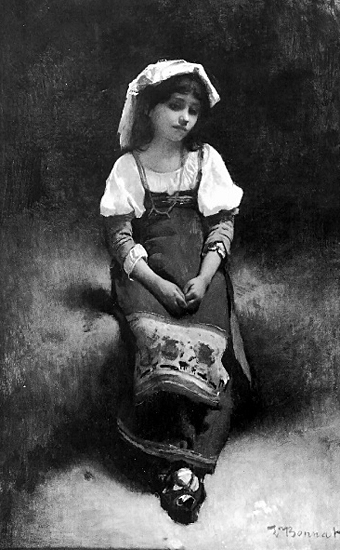
Italian Girl
(Sitting Girl)
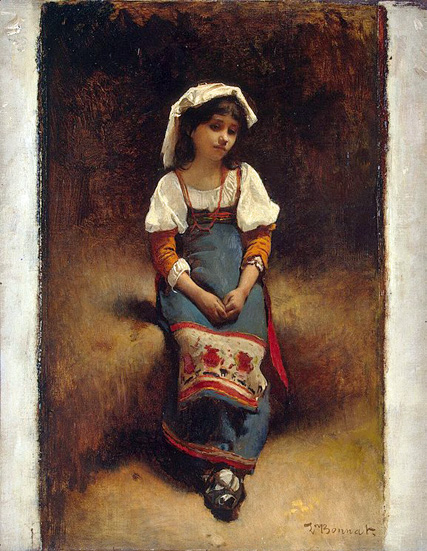
Henry Lillie Pierce: 1895

Henry Lillie Pierce
Henry Lillie Pierce was a United States Representative from Massachusetts. He was born in Stoughton on August 23, 1825. He pursued classical studies, attended the State normal school at Bridgewater, and engaged in manufacturing. He was elected a member of the Massachusetts House of Representatives, a member of the Boston Board of Aldermen, and served as Mayor of Boston. Pierce was elected as a Republican to the Forty-Third Congress to fill the vacancy caused by the death of William Whiting. He was reelected to the Forty- Fourth Congress and served from December 1, 1873, to March 3, 1877. He declined to be a candidate for renomination, was again Mayor of Boston in 1878, and died in that city on December 17, 1896. His interment was in Dorchester Burying Ground.
Hippolyte Taine
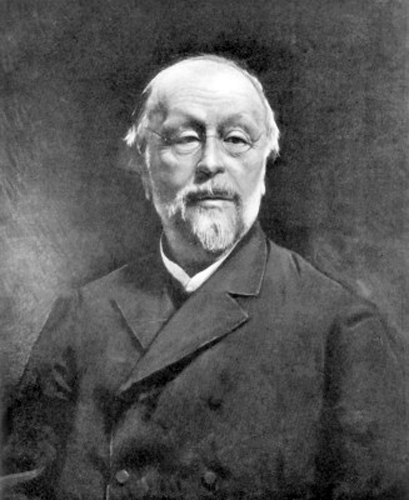
Hippolyte Taine
Hippolyte Adolphe Taine was a French critic and historian. He was the chief theoretical influence of French Naturalism, a major proponent of sociological positivism, and one of the first practitioners of historicist criticism. Literary historicism as a critical movement has been said to originate with him. Taine is particularly remembered for his three-pronged approach to the contextual study of a work of art, based on the aspects of what he called race, milieu, and moment.
Taine had a profound effect on French literature; the 1911 Encyclopedia Britannica asserted that "the tone which pervades the works of Zola, Bourget and Maupassant can be immediately attributed to the influence we call Taine's."
Taine is best known now for his attempt at a scientific account of literature, based on the categories of race, milieu, and moment. Taine used these words in French (race, milieu et moment); the terms have become widespread in literary criticism in English, but are used in this context in senses closer to the French meanings of the words than the English meanings, which are, roughly, nation, environment, and time.
Taine argued that literature was largely the product of the author's environment, and that an analysis of that environment could yield a perfect understanding of the work of literature. In this sense he was a sociological positivist, though with important differences. Taine did not mean race in the specific sense now common, but rather the collective cultural dispositions that govern everyone without their knowledge or consent. What differentiates individuals within this collective race, for Taine, was milieu: the particular circumstances that distorted or developed the dispositions of a particular person. The moment is the accumulated experiences of that person, which Taine often expressed as momentum; to some later critics, however, Taine's conception of moment seemed to have more in common with Zeitgeist.
Though Taine coined and popularized the phrase "race, milieu, et moment," the theory itself has roots in earlier attempts to understand the aesthetic object as a social product rather than a spontaneous creation of genius. Taine seems to have drawn heavily on the philosopher Johann Gottfried Herder's ideas of volk (people) and nation in his own concept of race; the Spanish writer Emilia Pardo Bazán has suggested that a crucial predecessor to Taine's idea was the work of Germaine de Staël on the relationship between art and society.
Germaine de Sta‘l, a French Writer Exiled by Napoleon
Germaine de Staël
by an unknoen artist at least to me (Senex)
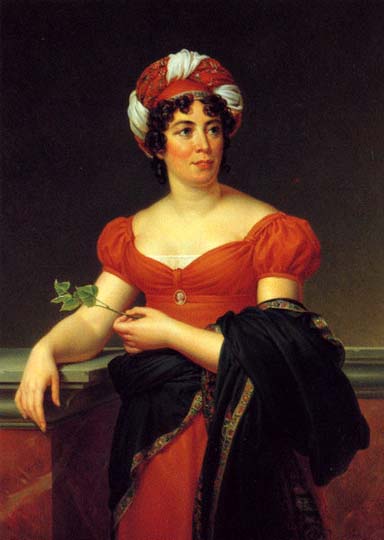
Taine's influence on French intellectual culture and literature was enormous. He had a special relationship, in particular, with Émile Zola. As critic Philip Walker says of Zola, "In page after page, including many of his most memorable writings, we are presented with what amounts to a mimesis of the interplay between sensation and imagination which Taine studied at great length and out of which, he believed, emerges the world of the mind." Zola's reliance on Taine, however, was occasionally seen as a fault; Miguel de Unamuno, after an early fascination with both Zola and Taine, eventually concluded that Taine's influence on literature was, all in all, negative.
Taine also influenced a number of nationalist literary movements throughout the world, who used his ideas to argue that their particular countries had a distinct literature and thus a distinct place in literary history. In addition, post-modern literary critics concerned with the relationship between literature and social history (including the New Historicists) continue to cite Taine's work, and to make use of the idea of race, milieu, and moment. The critic John Chapple, for example, has used the term as an illustration of his own concept of "composite history."
The chief criticism of race, milieu, and moment at the time the idea was created was that it did not sufficiently take into account the individuality of the artist, central to the creative genius of Romanticism. Even Zola, who owed so much to Taine, made this objection, arguing that an artist's temperament could lead him to make unique artistic choices distinct from the environment that shaped his general viewpoint; Zola's principal example was the painter Édouard Manet. Similarly, Gustave Lanson argued that race, milieu, and moment could not among themselves account for genius; Taine, he felt, explained mediocrity better than he explained greatness.
A distinct criticism concerns the possible sloppiness of the logic and scientific basis of the three concepts. As Leo Spitzer has written, the actual science of the idea, which is vaguely Darwinian, is rather tenuous, and shortly after Taine's work was published a number of objections were made on scientific grounds. Spitzer also points out, again citing period sources, that the relationship between the three terms themselves was never well understood, and that it is possible to argue that moment is an unnecessary addition implied by the other two.
Idyll: 1890
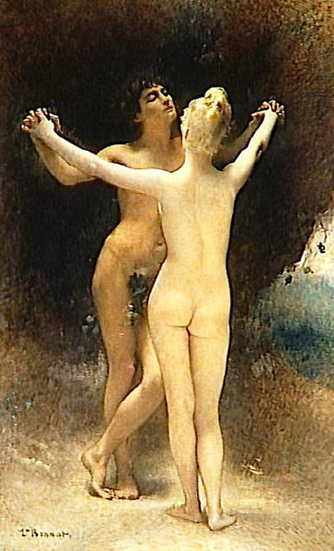
Idyll
An idyll or idyl is a short poem, descriptive of rustic life, written in the style of Theocritus' short pastoral poems, the Idylls. Later imitators included the Roman poets Virgil and Catullus, Italian poet Leopardi, and the English poet Alfred, Lord Tennyson.
An idyll can also be a kind of painting, usually representing a pastor and his animals in a rural setting. They are depicted in a natural way, with the three components - man, animal and the environment - in a harmonious unity, preventing the picture from being either a landscape, or a genre, or just an image of an animal. Nature in this combination is presented in an unsophisticated, realistic fashion.
The subjects of such pictures are usually simple people living in uncivilized conditions, featuring naiveté in their thinking and yet leading a happy and cheerful life. The approach to the presentation is not humorous, but emotional, sometimes sentimental.
Interieur de la Chapelle Sixtine
(Interior of the Sistine Chapel)
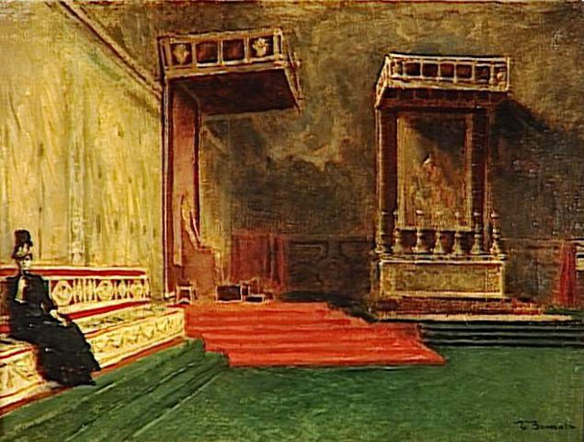
Interior of the Sistine Chapel
Various gifts and bequests from Mrs. Edouard Kann and her sister, Mrs. Albert Cahen from Antwerp, between 1925 and 1929, have given the Musée d'Orsay a rich collection of works by the painter Léon Bonnat. Alongside a self-portrait of the artist at the age of twenty-two and many portraits, including those of the donors, is this exceptional Interior of the Sistine Chapel, probably painted in the 1870's.
This almost deserted and nearly touristy vision of one of the highlights of the Vatican (the decoration of which is barely suggested) is swiftly brushed in a narrow range of colors, animated only by a single female figure sitting in the foreground near the left-hand edge of the painting, facing the viewer. This woman, probably Mrs. Kann with whom the painter travelled to Italy, is adjusting her lorgnette to look more closely at the decoration or perhaps at the painter who was busy sketching this curious moment.
With this painting, Bonnat gives us a profane version of Good Friday in the Sistine Chapel which he had painted in 1860, taking his inspiration from a painting by Ingres in 1814, Pope Pius VII in the Sistine Chapel.
Isaac Pereire (1806-1880)
.jpg)
Isaac Pereire
French financier; born Nov. 25, 1806, at Bordeaux; died July 12, 1880, at Armanvilliers; grandson of Jacob Rodrigues Pereire. While still young he lost his father, and in 1823 went to Paris as employee in a bank. From this time he and his brother Emile were inseparable. Through Olinde-Rodrigues, a relative and the foremost pupil of Saint Simon, the two brothers were introduced to Rodrigues' followers and became at once enthusiastic supporters of Saint-Simonism, making active propaganda, together with Enfantin, Michel Chevalier, Eugène Rodrigues, Duveyrier, and others. The brothers then took up journalism, Isaac becoming collaborator on the "Globe," "Temps," "Journal des Débats," etc.
In 1835, amid great financial difficulties, Pereire and his brother Emile built the first railway in France, that from Paris to Saint-Germain; in 1836 they constructed the Paris-Versailles line, and in 1845 the Chemin de Fer du Nord. In 1852 the two brothers founded, not without reference to St.-Simonistic ideas, the Société Générale du Crédit Mobilier, which had for its object the carrying out of great undertakings by means of the union of small capitalists, thereby allowing the latter to share in the profits. This institution undertook the building of several large railways in France, Switzerland, Russia, and Spain, and founded several gas and omnibus companies. Although the Crédit Mobilier, which caused radical changes in the entire financial market, was obliged to liquidate in 1867, Isaac and Emile Pereire remained prominent financiers. Both, together with Isaac's son Eugène, were returned to the Corps Législatif in 1863.
Isaac, who was made a knight of the Legion of Honor, was distinguished for his philanthropy. In 1880 he founded a prize of 100,000 francs, divided into four series, for the best works on social economics. Although he remained true to the religion of his fathers, he used his influence in favor of the Roman Catholic Church, and voted in the Chamber for the maintenance of the temporal power of the pope.
Italian Girl with a Jug: 1875
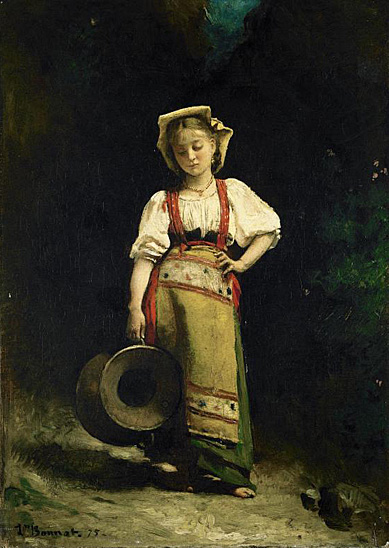
Italienne: 1872
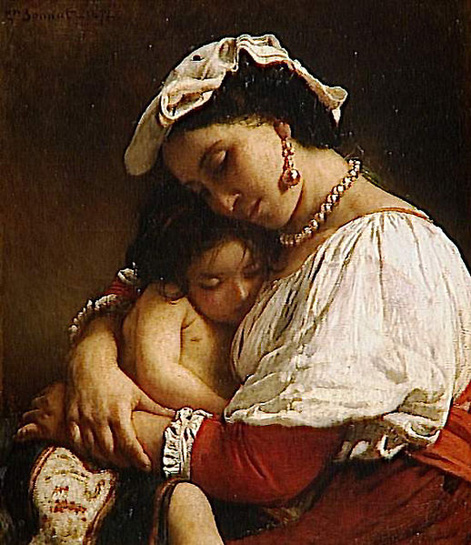
First Steps
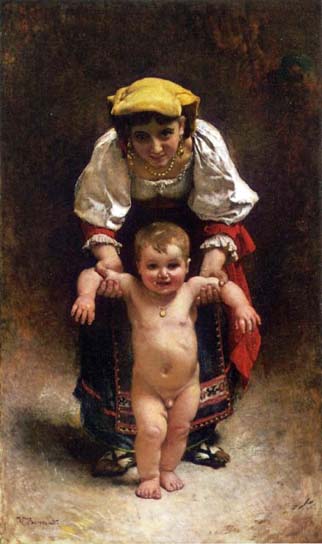
Jeune Fille Italienne
(The Italian Girl)
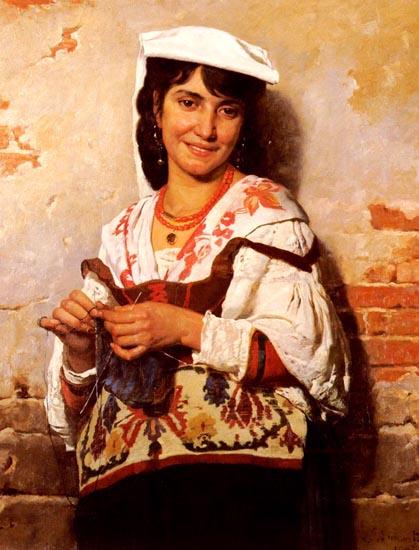
An Italian Woman, ca. 1858-61
As a teenager, Bonnat moved with his family to Madrid where he received his initial artistic training and was deeply influenced by Spanish Old Master painting. In 1854, he moved to Paris and studied under Léon Cogniet (1794-1880) at the École des Beaux-Arts. He placed second for the Prix de Rome in 1857, but received a scholarship from supporters in his native Bayonne to study in Rome from 1858 to 1861. It was there that he made many works depicting Italians in their colorful costumes, including this charming oil sketch of a young woman with her remarkable headdress.
Jean Gigoux
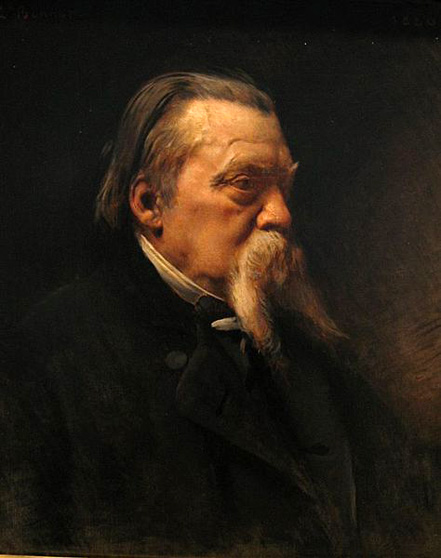
Jeune femme faisant la charite a l'entree de la chapelle de l'hopital San Sebastian a Cordoue
(A Young Women Performing Charitiable Acts)
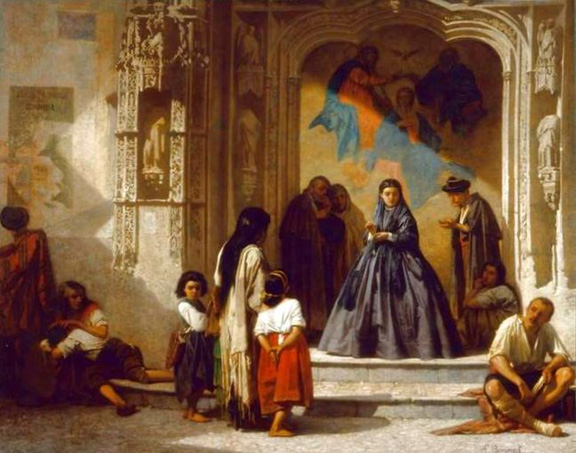
Jacob Wrestling the Angel: 1876

Whenever I see the name Leon Bonnat my mind instantly recalls that Thomas Eakins briefly studied under him in Paris before moving on to the studio of Jean-Leon Gerome. Gerome's influence on Eakins, which is significant thanks to the greater amount of time they spent together, but I think Bonnat deserves some credit, too, for Eakins' development. Born June 20, 1833 in France, Bonnat moved to Madrid, Spain, with his family as a teenager, and learned painting from Raimundo de Madrazo y Garreta, a successful Spanish portraitist. Madrazo taught in the classic Salon style, helping Bonnat develop strong draftsmanship, especially when it came to the human figure. Bonnat's 'Jacob Wrestling With the Angel' (above, from 1876) demonstrates Bonnat's drawing skills and close attention to the human form in motion and under stress. I can't help but look at Bonnat's 'Jacob Wrestling With the Angel' and think of all the wrestling images Eakins went on to paint and photograph.
Job: 1900

Bonnat's name has largely faded from the history of art, like so many of the generation of realists caught up in the whirlwind of new movements such as Impressionism that still dominate mainstream art consciousness today. William Coffin, one of Bonnat's many American students, wrote a great tribute to his teacher in 1922 upon Bonnat's death, detailing not only Bonnat's great artistic talents, but also his generosity and humanitarianism. Like Gerome and other great artist-teachers of the late nineteenth century, Bonnat helped usher in the new wave of art that swamped them, teaching such early modernists as Gustave Caillebotte, Georges Braque, and Henri de Toulouse-Lautrec. At no point, however, did Bonnat feel like the Biblical Job he painted in 1900 (above), i.e., abandoned unreasonably by the art gods. While Gerome may have helped foster some of Eakins' more radical ideas on the human body, I'd like to think that Bonnat taught Eakins some of the professionalism that helped Eakins endure (not always gracefully) "the slings and arrows of outrageous fortune" that those radical ideas invited.
John Taylor Johnston (1820-1893)

John Taylor Johnston (1820-1893)
John Taylor Johnston was born in April 8, 1820, the son of John Johnston, a prominent merchant banker in New York City. Johnston was the founding president of the Metropolitan Museum of Art in 1870, as well as the President of the Central Railroad of New Jersey from 1848 to 1877. He was born and grew up in Greenwich Village, and in 1839 graduated from New York University, an institution founded by his father and several other civic-minded New Yorkers. He later studied at Yale Law School, and was admitted to the bar in 1843. In 1856, Johnston constructed the first marble mansion in New York as his residence at 8 Fifth Avenue, just north of Washington Square. He died there on March 24, 1893.
Joseph Dreyfus: 1890
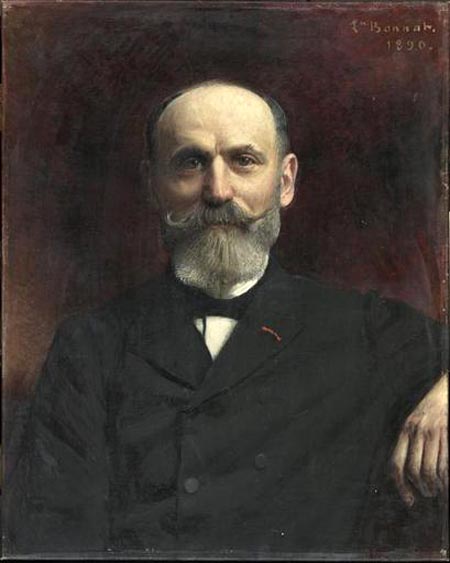
Joseph Nicolas Robert-Fleury
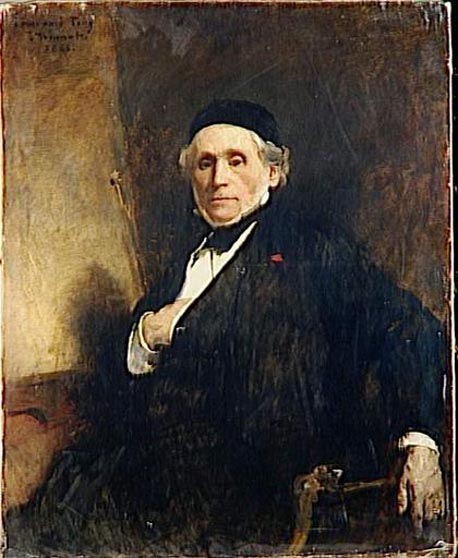
Joseph Nicolas Robert-Fleury
Joseph Nicolas Robert-Fleury was a French painter.
Born in Cologne, he was sent by his family to Paris, and after travelling in Italy returned to France and made his first appearance at the Salon in 1824; his reputation, however, was not established until three years later, when he exhibited Tasso at the Convent of Saint Onophrius.
Endowed with a vigorous original talent, and with a vivid imagination, especially for the tragic incidents of history, he soon rose to fame, and in 1850 succeeded François Granet as member of the Académie des Beaux-Arts. In 1855, he was appointed professor and in 1863 director of the École des Beaux-Arts, and in the following year he went to Rome as director of the French Academy in that city.
Jules Ferry
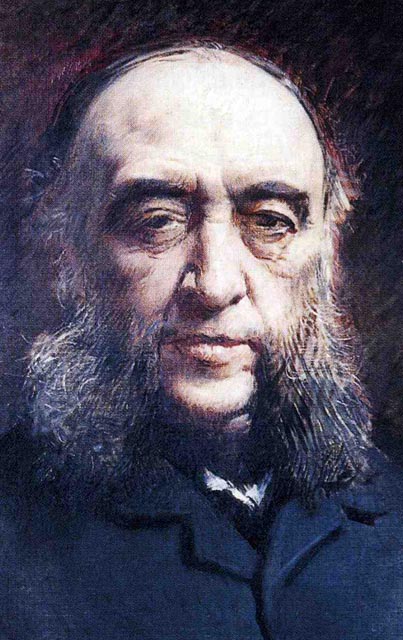
Jules François Camille Ferry
Jules François Camille Ferry was a French statesman, republican. Was a promoter of laicism (i.e. secular control of political and social institutions in a society distinguished from clericalism) and among others, supported colonial expansion.
Born in Saint-Dié, in the Vosges département, France, he studied law, and was called to the bar at Paris, but soon went into politics, contributing to various newspapers, particularly to Le Temps. He attacked the Second French Empire with great violence, directing his opposition especially against Baron Haussmann, Prefect of the Seine département. Elected republican deputy for Paris in 1869, he protested against the declaration of war with Germany, and on September 6, 1870 was appointed prefect of the Seine by the Government of National Defense.
In this position he had the difficult task of administering Paris during the siege, and after the Paris Commune was obliged to resign (June 5, 1871). From 1872 to 1873 he was sent by Adolphe Thiers as Minister to Athens, but returned to the chamber as deputy for the Vosges, and became one of the leaders of the Republican Party. When the first republican ministry was formed under William Henry Waddington on February 4, 1879, he was one of its members, and continued in the ministry until 30 March 1885, except for two short interruptions, first as Minister of Education and then as Minister of Foreign Affairs. A leader of the Opportunist Republicans faction, he was twice Premier (1880-1881 and 1883-1885).
Ferry remained an influential member of the Moderate Republican Party, and directed the opposition to General Boulanger. After the resignation of Jules Grévy (December 2, 1887), he was a candidate for the Presidency of the Republic, but the radicals refused to support him, and he withdrew in favor of Sadi Carnot.
Portrait of Marie François Sadi Carnot
by Theobald Chartran
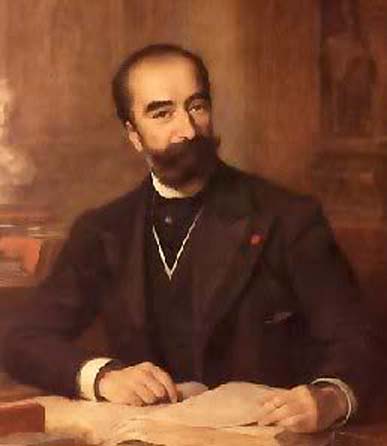
In 1887, a man named Aubertin attempted to assassinate Jules Ferry, who later died from complications attributed to this wound on March 17, 1893. The Chamber of Deputies gave him a state funeral.
Assassination of Jules Ferry
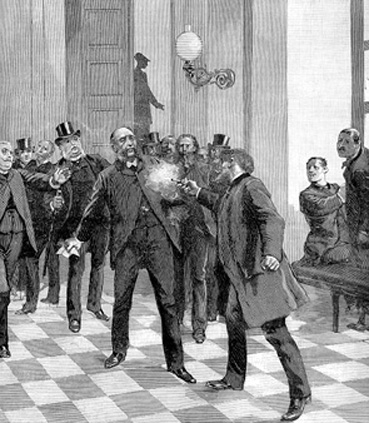
Jules Ferry was shot by an Alsatian fanatic on Dec. 10, 1892, Ferry died in Paris on March 17, 1893.
La Maquise Feydeau de Brou
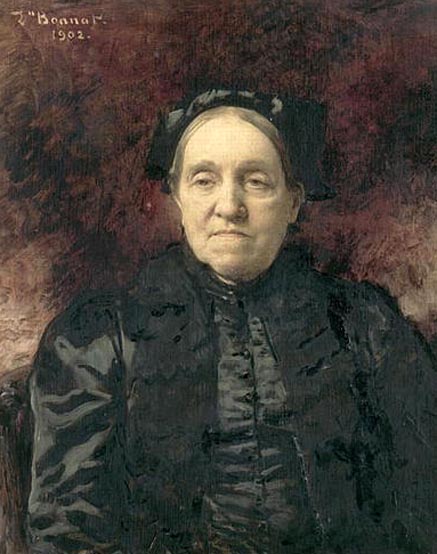
La Tenerezza
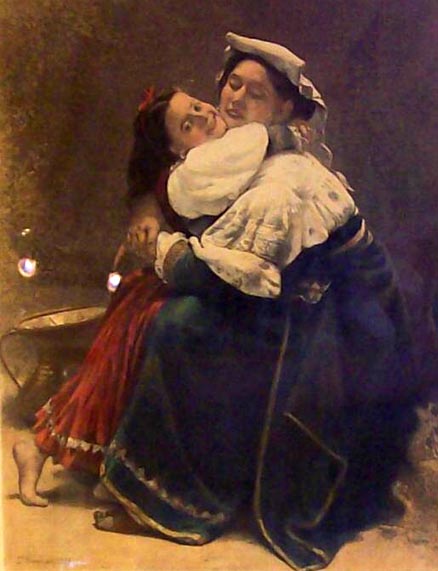
Le Cardinal Charles Lavigerie, Archeveque d'Alger (1825-1892)
.jpg)
Charles Lavigerie
Charles Martial Allemand Lavigerie was a French Cardinal, Archbishop of Carthage and Algiers and Primate of Africa.
Born at Bayonne, he was educated at Saint Sulpice, Paris. Ordained a priest in 1849, he was Professor of Ecclesiastical History at the Sorbonne from 1854 to 1856.
In 1856, he accepted the direction of the schools of the East, and was thus for the first time brought into contact with the Islamic World. C'est là, he wrote, que j'ai connu enfin ma vocation. (It was there that I learned my calling.) Activity in missionary work, especially in alleviating the distresses of the victims of the Druzes, soon brought him prominently into notice. He was made a Chevalier of the Legion of Honor and, in October 1861, shortly after his return to Europe, was appointed French Auditor at Rome.
Two years later he was raised to the See of Nancy, where he remained for four years, during which the Diocese became one of the best administered in France. While Bishop of Nancy he met Marshal MacMahon, then Governor-General of Algeria, who in 1866 offered him the See of Algiers, just raised to an Archbishopric. Lavigerie landed in Africa on the 11th of May 1868, when the great famine was already making itself felt, and he began in November to collect the orphans into villages. This action, however, did not meet with the approval of MacMahon, who feared that the Arabs would resent it as an infraction of the religious peace, and thought that the Moslem church, being a state institution in Algeria, ought to be protected from proselytism; so it was intimated to the prelate that his sole duty was to minister to the colonists. Lavigerie, however, continued his self-imposed task, refused the Archbishopric of Lyon, which was offered to him by the e Emperor, and won his point.
Contact with the natives during the famine caused Lavigerie to entertain exaggerated hopes for their general conversion, and his enthusiasm was such that he offered to resign his Archbishopric in order to devote himself entirely to the missions. Pope Pius IX refused this, but granted him a Coadjutor, and placed the whole of equatorial Africa under his charge. In 1870 Lavigerie warmly supported Papal Infallibility. In 1871 he was twice a candidate for the National Assembly, but was defeated. In 1874 he founded the Sahara and Sudan Mission, and sent missionaries to Tunis, Tripoli, East Africa and the Congo. The order of African missionaries thus founded, for which Lavigerie himself drew up the rule, has since then become famous under various translations of the French Pères Blancs or White Fathers, after the white Arab dress they wore. Their official name is La Société de Missionnaires d'Afrique (Society of Missionaries for Africa).
From 1881 to 1884 his activity in Tunisia so raised the prestige of France that it drew from Gambetta the celebrated declaration, L'Anticléricalisme n'est pas un article d'exportation, and led to the exemption of Algeria from the application of the decrees concerning the religious orders. On the 27th of March 1882 the dignity of cardinal was conferred upon Lavigerie, but the great object of his ambition was to restore the See of Saint Cyprian; and in that also he was successful, for by a bull of 10 November 1884 the Metropolitan See of Carthage was re-erected, and Lavigerie received the pallium on the 25th of January 1885.
The later years of his life were spent in ardent anti-slavery propaganda, and his eloquence moved large audiences in London, as well as in Paris, Brussels and other parts of the continent. He hoped, by organizing a fraternity of armed laymen as pioneers, to restore fertility to the Sahara; but this community did not succeed, and was dissolved before his death. In 1890 Lavigerie appeared in the new character of a politician, and arranged with Pope Leo XIII to make an attempt to reconcile the church with the republic. He invited the officers of the Mediterranean squadron to lunch at Algiers, and, practically renouncing his monarchical sympathies, to which he clung as long as the comte de Chambord was alive, expressed his support of the republic, and emphasized it by having the Marseillaise played by a band of his Pères Blancs. The further steps in this evolution emanated from the pope, and Lavigerie, whose health now began to fail, receded comparatively into the background. He died at Algiers on the 26th of November 1892
Le Sinai

Leon Cogniet
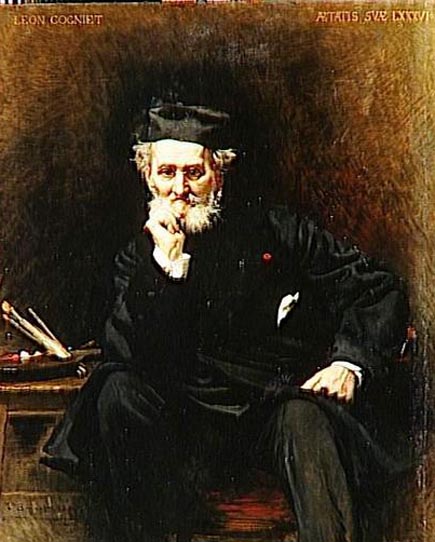
Leon Cogniet
Léon Cogniet was a French painter. Cogniet was born in Paris. In 1812, he entered the École des Beaux-Arts in Paris, where he studied under Pierre-Narcisse Guérin at the same time as Delacroix and Géricault. In 1817 he won the Prix de Rome and was a resident at the Villa Medici from 1817 to 1822.
A Romantic painter, his main subjects were history and portraits. He died in Paris in 1880.
Leon Gambetta (1838-1892)
.jpg)
Leon Gambetta
French republican statesman who helped direct the Defense of France during the Franco-Prussian War of 1870-71. In helping to found the Third Republic, he made three essential contributions: first, by his speeches and articles, he converted many Frenchmen to the ideals of moderate democratic Republicanism. Second, by his political influence and personal social contacts, he gathered support for an elective democratic political party, the Republican Union. Finally, by backing Adolphe Thiers, who was elected provisional head of government by the National Assembly of 1871, against royalists and Bonapartists, he helped transform the new regime into a parliamentary republic. Gambetta was briefly premier of France from Nov. 14, 1881, to Jan. 16, 1882.
Madame Bonnat
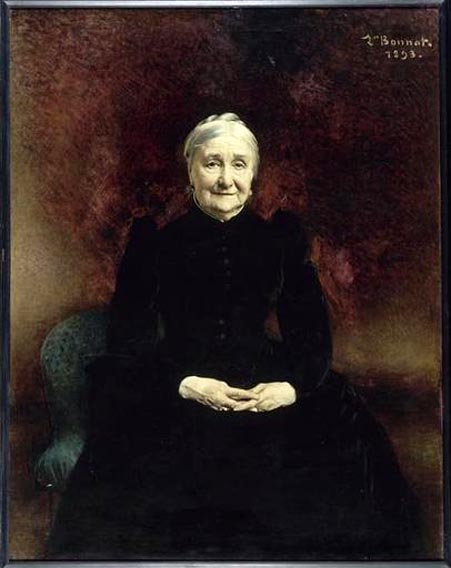
Madame Maurice Pascal
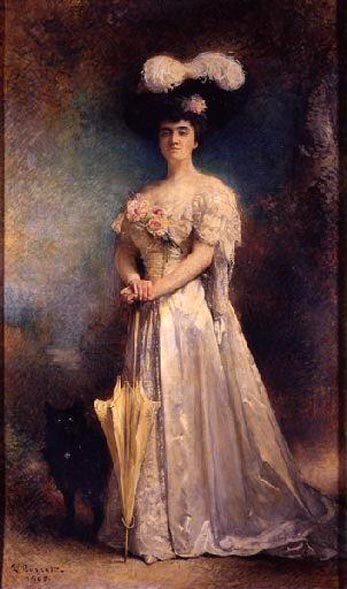
Madame Pasca
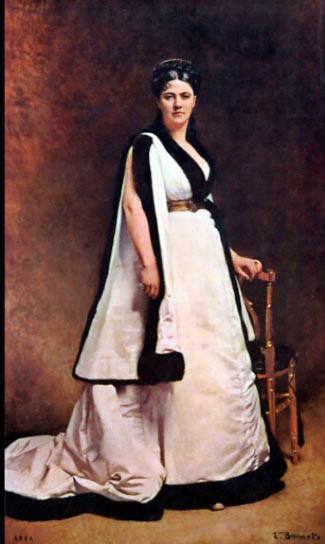
Maitre Edouard Pascal
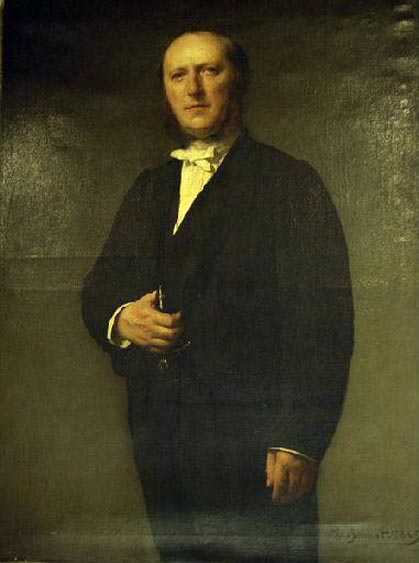
Mary Sears
(Later Mrs. Francis Shaw): 1878
_1878.jpg)
Mary Sears
The Sears and Shaw families were very prominent in the Boston area and were important patrons of the Museum of Fine Arts. Painted in Paris in 1878, this portrait was shown at the Paris Salon the following year. Bonnat was internationally acclaimed for his portraits, and he considered this to be one of his best.
Meditation: 1884

Nude Orientalist

Paysage de Jericho
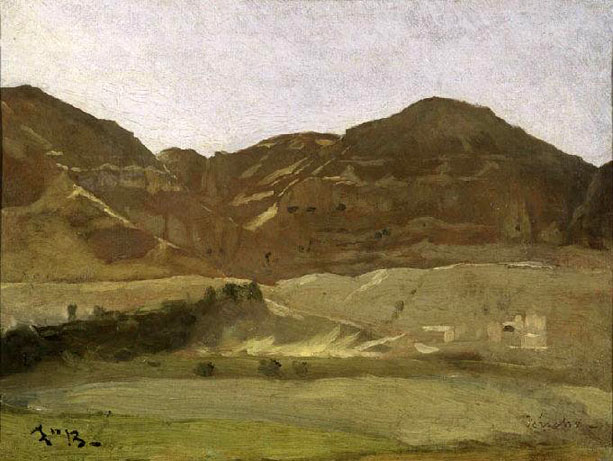
Pelerins au pied de la statue de Saint Pierre: 1864
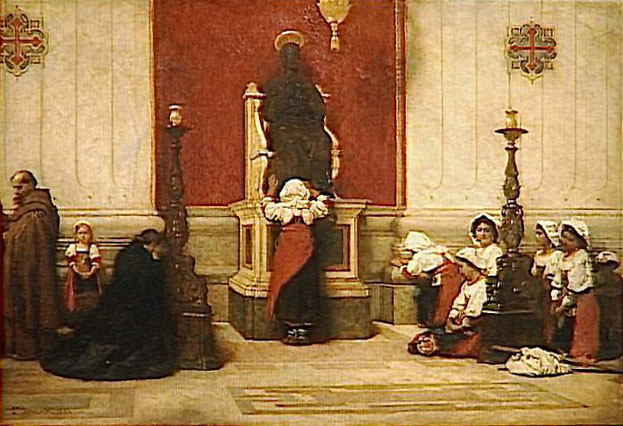
Portrait d'Auguste Cain
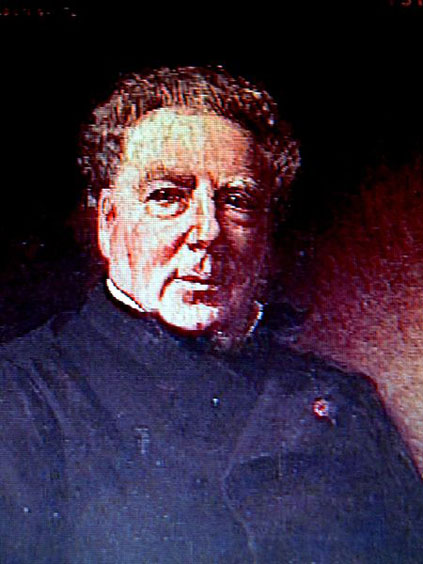
Portrait de femme
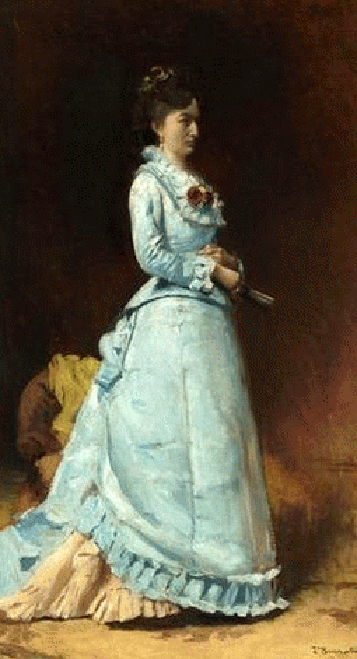
Portrait de fillette

Portrait de Henri Harpignies

Henri Harpignies
Henri-Joseph Harpignies was a French landscape painter of the Barbizon School.
He was born at Valenciennes. His parents intended for him to pursue a business career, but his determination to become an artist was so strong that it conquered all obstacles, and he was allowed at the age of twenty-seven to enter Jean Achard's atelier in Paris. From this painter he acquired a groundwork of sound constructive draftsmanship, which is so marked a feature of his landscape painting. After two years under this exacting teacher he went to Italy, whence he returned in 1850.
During the next few years he devoted himself to the painting of children in landscape setting, and fell in with Corot and the other Barbizon masters, whose principles and methods are to a certain extent reflected in his own personal art. To Corot he was united by a bond of warm friendship, and the two artists went together to Italy in 1860.
On his return, he scored his first great success at the Salon, in 1861, with his 'Lisière de bois sur les bords de l'Allier'. After that year he was a regular exhibitor at the old Salon; in 1886 he received his first medal for 'Le Soir dans la campagne de Rome', which was acquired for the Luxembourg Gallery. Many of his best works were painted at Hérisson in the central France region of Bourbonnais, as well as in the Nivernais and Auvergne regions.
Portrait de Ignacy Paderewski
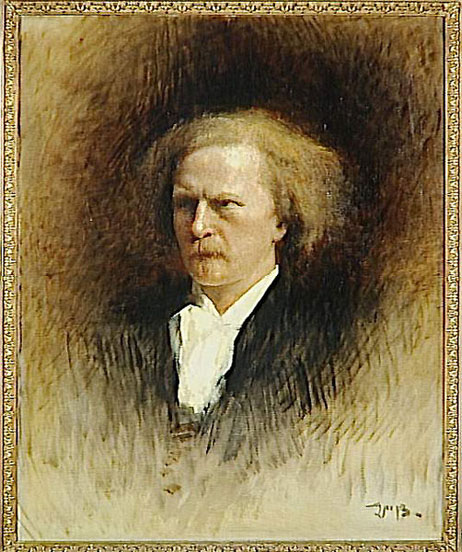
Ignacy Jan Paderewski was a Polish pianist, composer, diplomat, politician, and the third Prime Minister of the Republic of Poland. He is sometimes referred to by the German version of his name Ignaz Paderewski.
Portrait de Joseph Reinach (1856-1921)
.jpg)
Joseph Reinach
Joseph Reinach was a French author and politician. He was born in Paris. His two brothers Salomon and Theodore would become well-known in the field of archaeology. After studying at the Lycée Condorcet he was called to the bar in 1887. He attracted the attention of Léon Gambetta by writing articles on Balkan politics for the Revue bleue, and joined the staff of the Republique française. In Gambetta's grand ministère, Reinach was his secretary, and drew up the case for a partial revision of the US Constitution and for the electoral method known as the Scrutin de Liste. In the République française he waged a steady war against General Boulanger which resulted in three duels, one with Edmond Magnier and two with Paul Déroulède. Between 1889 and 1898 he sat for the Chamber of Deputies for Digne.
As a member of the army commission, reporter of the budgets of the ministries of the interior and of agriculture he brought forward bills for the better treatment of the insane, for the establishment of a colonial ministry, for the taxation of alcohol, and for the reparation of judicial errors. He advocated complete freedom of the theater and the press, the abolition of public executions, and denounced political corruption of all kinds. However, he was indirectly implicated in the Panama Scandals through his father-in-law, Baron de Reinach; as soon as he learned that he was benefiting by fraud, he made appropriate restitution. Reinach is best known as the champion of Alfred Dreyfus. At the time of the original trial he attempted to secure a public hearing of the case, and in 1897 he allied himself with Scheurer-Kestner to demand its revision. He denounced in the Siècle the Henry forgery, and Esterhazy's complicity. His articles in the Siècle aroused the fury of the anti-Dreyfus party, especially as Reinach was himself a Jew and accused by some of taking up Dreyfus's defense on racial grounds. He lost his seat in the Chamber of Deputies, and, having refused to fight Henri Rochefort, eventually brought an action for libel against him. Finally, when the "Dreyfus Affair" was resolved and Dreyfus was pardoned, he wrote a history of the case, completed in 1905.
In 1906 Reinach was re-elected for Digne. In that year he became a member of the commission of the national archives, and the following year a member of the council on prisons. Reinach was a prolific writer on political subjects. On Gambetta he published three volumes in 1884, and he also edited his speeches.
Portrait de la comtesse Emanuella Pignatelli Potocka: 1880
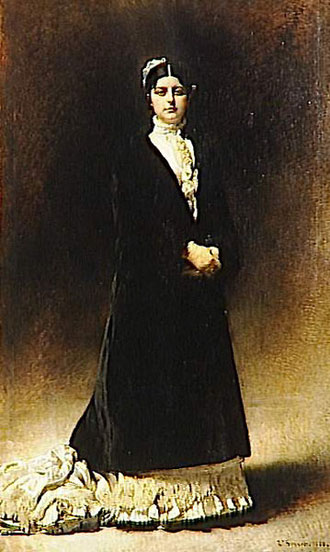
Portrait de M. Daniel Guestier

Portrait de M. Delarue, architecte
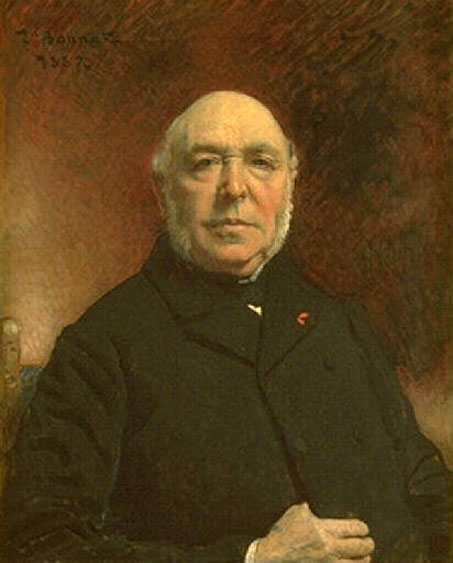
Portrait Du General Henri d'Orleans, Duc d'Aumale: 1880
.jpg)
Portrait de M. Le Duc d'Aumale: 1890
.jpg)
Henri Eugene Philippe Louis d'Orleans, duc d'Aumale
Portrait de Madame Albert Cahen d'Anvers: 1891
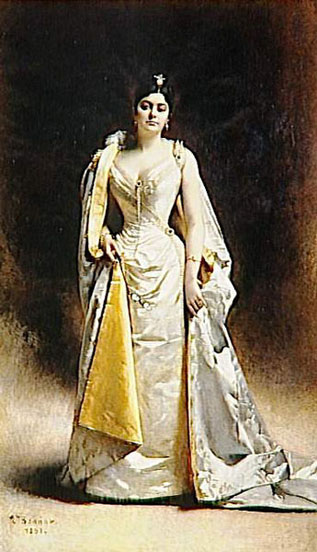
Composer Albert Cahen in a Portrait by Auguste Renoir: 1881
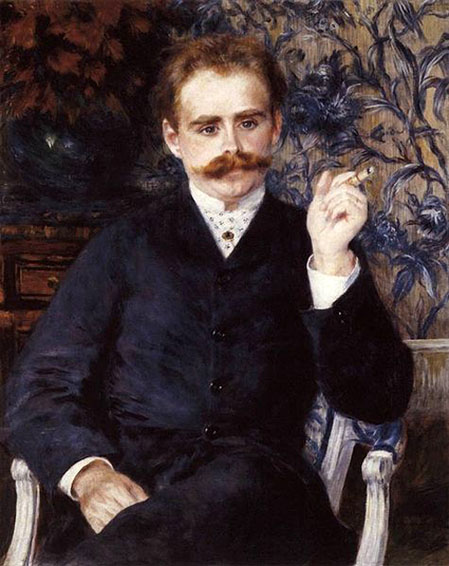
Albert Cahen
Albert Cahen d'Anvers was a French composer best known for light opera. He was a pupil of César Franck (composition) and Mme. Szarvady (pianoforte). He enjoyed access to the elite social circles of his day, and made himself known to the musical world with the following compositions:
Jean le Précurseur, a Biblical poem (1874)
Le Bois, a comic opera (1880, Paris)
Endymion, a mythological poem (1883, Paris)
La Belle au Bois Dormant, a fairy operetta (1886, Geneva)
Le Vénitien, a four-act opera (1890, Rouen)
Fleur des Neiges, ballet (1891)
La Femme de Claude, a three-act lyric drama (1896, Paris)
Portrait de Madame Leopold Stern: 1879

Mademoiselle Franchetti: 1875
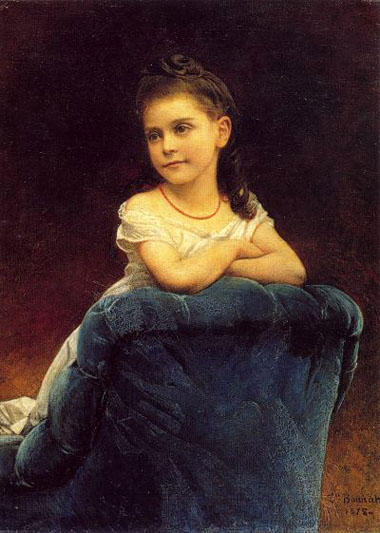
Mademoiselle Franchetti is on permanent display in the Musée Bonnat in Bayonne, France.
Portrait de Mademoiselle Franchetti: 1875
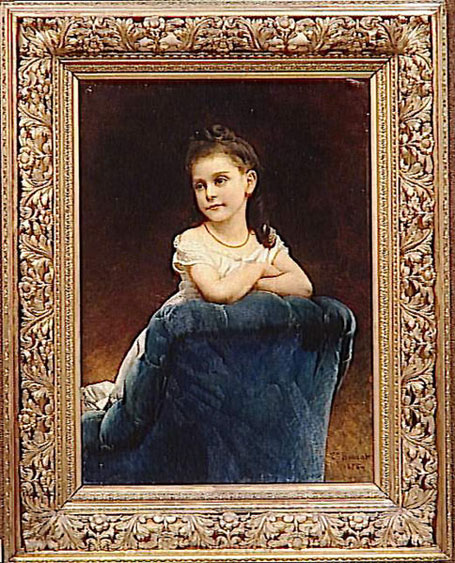
Portrait de Marie-Charlotte Madier Trelat: ca 1883
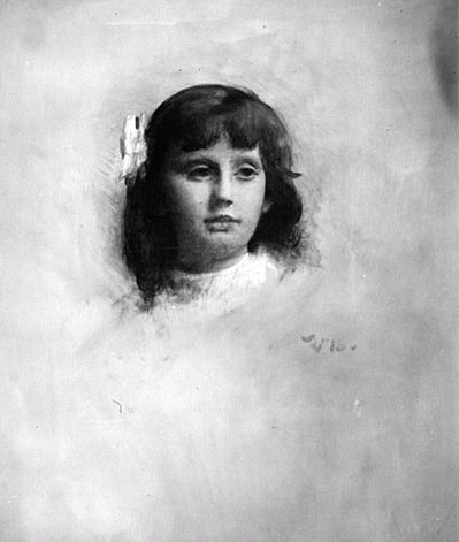
Portrait de Monsieur Cernuschi

Henri Cernuschi
Henri Cernuschi (Enrico Cernuschi in Italian) was a major French banker, economist and Asian art collector, who started off as an Italian politician in 1848-1850.
He was born of wealthy parents at Milan, and was destined for the legal profession. During his studies he became involved in the revolutionary movement. He played a conspicuous part in the insurrection at Milan in 1848, and also at Rome in 1849, where he had a seat in the National Assembly. On the collapse of the revolutionary government he was arrested (1850), but managed to escape to France, where he engaged in commerce and banking, became naturalized, and acquired a large fortune. He took a prominent part in opposing the Socialist movement, and in April 1870, having subscribed a large sum to the funds of a committee formed to combat the Napoleonic Plebiscite, had to leave the country.
In September the formation of the Third Republic enabled Cernuschi to return, but he soon left Paris to travel in the Far East. He returned with a fine art collection that he would constantly expand upon for the remainder of his life. He bequeathed his collection to the city of Paris as well as his private residence at No 7. avenue Valasquez on the edge of Parc Monceau in the 8th arrondissement to be used as a museum. Open to the public today, the Cernuschi Museum collection includes Chinese art, funeral statuary, painted 8th-century silks, neolithic terracottas (3rd millennium BC), ancient Persian bronze objects, an Amithaba Buddha from the 8th Century, plus examples of calligraphy.
As a banker, Cernuschi is best known for his publications on financial questions, more especially bimetallism. Of the latter he was an ardent champion, and the word itself is commonly supposed to have originated with him - at least in its English form it is first found in his Silver Vindicated (1876). Among his other works may be mentioned: Mécanique de l'échange (1861); Illusion des sociétés cooperatives (1886); Le Bimetallisme en Angleterre (1879); Le Grand Procès de l'Union latine (1884).
He died at Menton in 1896.
Portrait du Docteur Adrien Doyon
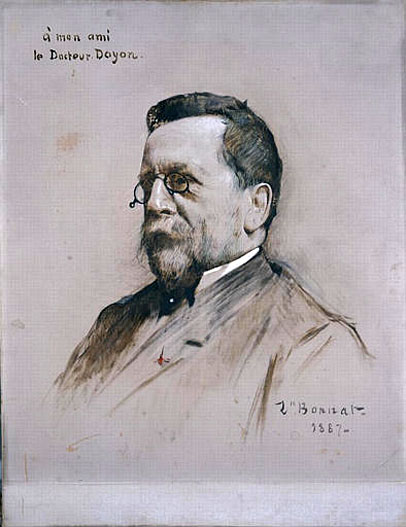
Pierre Adolphe Adrien Doyon
Pierre Adolphe Adrien Doyon was a French dermatologist and balneologist born in Grenoble.
From 1848 he was interne des hôpitaux at Lyon, where he became associated with the hospice of Antiquaille. In 1858 he relocated to Uriage, where he participated in development of its spa. Here he was appointed medical inspector, a position he maintained until his death in 1907.
Doyon is chiefly remembered for his published works. With Ernest Henri Besnier he founded the journal Annales de dermatologie et de syphiligraphie. Doyon spoke fluent German, and had professional relationships with dermatologists in Austria and Germany. Doyon is responsible for translating the works of Ferdinand von Hebra, Albert Neisser, Heinrich Auspitz, and Moritz Kaposi from German into French. With French syphilologist Charles-Paul Diday (1812-1894), he co-authored works on venereal disease, such as Les herpès génitaux and Thérapeutique des maladies vénériennes et des maladies cutannées.
Doyon was an officer of the Légion d'honneur and an associate member of the Académie Nationale de Médecine.
Portrait, du President de La Republique, Armand Fallières
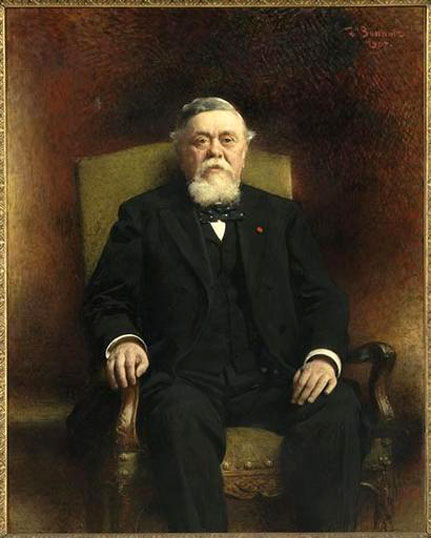
Armand Fallières
Clément Armand Fallières was a French politician, president of the French Republic from 1906 to 1913.
He was born at Mézin in the département of Lot-et-Garonne, France, where his father was clerk of the peace. He studied law and became an advocate at Nérac, beginning his public career there as municipal councillor (1868), afterwards mayor (1871), and as councillor-general of the département of Lot-et-Garonne (1871). Being an ardent Republican, he lost this position in May 1873 upon the fall of Thiers, but in February 1876 was elected deputy for Nérac. In the chamber he sat with the Republican Left, signed the protestation of 18 May 1877, and was re-elected five months later.
In 1880 he became under-secretary of state in the department of the interior in Jules Ferry's ministry (May 1880 to November 1881). From 7 August 1882 to 20 February 1883 he was minister of the interior, and for a month (from 29 January 1883) was prime minister. His ministry had to face the question of the expulsion of the pretenders to the throne of France, owing to the proclamation by Jérôme Napoleon Bonaparte (January 1883).
Fallières, who was ill at the time, was not able to face the storm of opposition, and resigned when the senate rejected his project. The following November, however, he was chosen as minister of public instruction by Jules Ferry, and carried out various reforms in the school system.
He resigned in March 1885, becoming minister of the interior in Maurice Rouvier's cabinet two years later. He exchanged his portfolio in December for that of the department of justice. He returned again to the ministry of the interior in February 1889, and finally retook the department of justice from March 1890 to February 1892. In June 1890 his département (Lot-et-Garonne) elected him to the senate by 417 votes to 23. There Fallières remained independent of party struggles, although maintaining his influence among the Republicans.
In March 1899 he was elected President of the Senate, and retained that position until January 1906, when he was chosen by a union of the groups of the Left in both chambers as candidate for the Presidency of the Republic. He was elected on the first ballot by 449 votes against 371 for his opponent, Paul Doumer.
Fallieres was an outspoken opponent of the death penalty and gave pardon to many prisoners sentenced to death.
Portrait du Sculpteur Barye: 1889
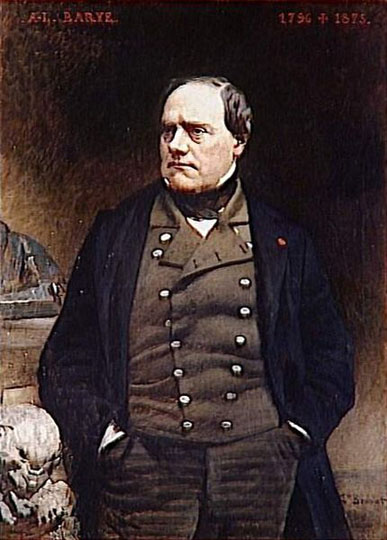
Antoine-Louis Barye
Antoine-Louis Barye was a French sculptor most famous for his work as an animalier, a sculptor of animals.
Born in Paris, Barye began his career as a goldsmith, like many sculptors of the Romantic Period. After studying under sculptor Francois-Joseph Bosio and painter Baron Antoine-Jean Gros he was in 1818 admitted to the École des Beaux Arts. But it was not until 1823, while working for Fauconnier, the goldsmith, that he discovered his true predilection from watching the animals in the Jardin des Plantes, making vigorous studies of them in pencil drawings comparable to those of Delacroix, then modeling them in sculpture on a large or small scale.
In 1831 he exhibited his 'Tiger Devouring a Crocodile', and in 1832 had mastered a style of his own in the 'Lion and Snake'. From that point Barye, though engaged in a perpetual struggle with want, exhibited year after year studies of animals-admirable groups which reveal him as inspired by a spirit of true romance, as in his 'Roger and Angelica on the Hippogriff' (1840), drawn from an episode in Orlando furioso, and a feeling for the beauty of the antique, as in 'Theseus and the Minotaur' (1847), 'Lapitha and Centaur' (1848), and numerous minor works now very highly valued.
Barye was no less successful in sculpture on a small scale, and excelled in representing animals in their most familiar attitudes. Examples of his larger work include the Lion of the Column of July, of which the plaster model was cast in 1839, various lions and tigers in the gardens of the Tuileries, and the four groups--'War, Peace, Strength, and Order' (1854).
In 1852 he cast his bronze 'Jaguar Devouring a Hare'. Fame came late in the sculptor's life. He was made Professor of Drawings at the Museum of Natural History in 1854, and was elected to the Académie des beaux-arts in 1868. No new works were produced by Barye after 1869.
The mass of admirable work left by Barye entitles him to be regarded as one of the great animal life artists of the French School, and the refiner of a class of art which has attracted such men as Emmanuel Frémiet, Peter, Cain, and Gardet.
Portrait du Vicomte Both de Tauzia

Portrait of a Man: 1868
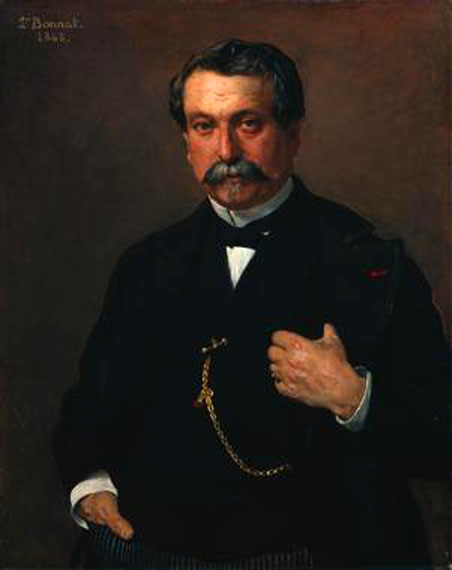
Portrait of Jules Grevy: 1880
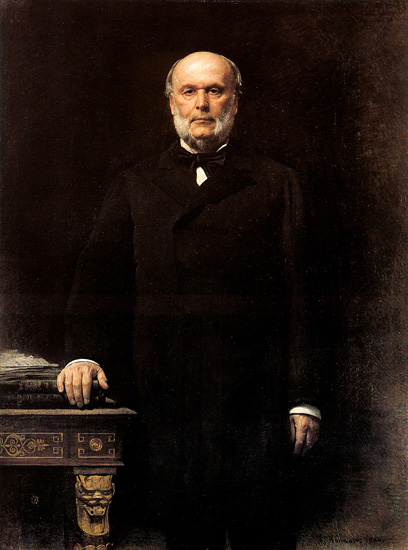
Jules Grévy
François Paul Jules Grévy was a President of the French Third Republic and one of the leaders of the Opportunist Republicans faction. Given that his predecessors were monarchists who tried without success to restore the French monarchy, Grévy is seen as the first real republican President of France.
Born at Mont-sous-Vaudrey in the Jura mountains, he became an advocate in 1837, and, having steadily maintained republican principles under the Orléans monarchy, was elected by his native department to the Constituent Assembly of 1848. Foreseeing that Louis Bonaparte would be elected president by the people, he proposed to vest the chief authority in a president of the Council elected and removable by the Assembly, or in other words, to suppress the Presidency of the Republic. After the coup d'état this proposition gained Grévy a reputation for sagacity, and upon his return to public life in 1868 he took a prominent place in the republican party.
A portrait of Grévy as a billiards player from the 12 July 1879 issue of Vanity Fair. After the fall of the Empire he was chosen president of the Assembly on 16 February 1871, and occupied this position until 2 April 1873, when he resigned on account of the opposition of the Right, which blamed him for having called one of its members to order in the session of the previous day. On 8 March 1876 he was elected president of the Chamber of Deputies, a post which he filled with such efficiency that upon the resignation of Marshal MacMahon he seemed to step naturally into the Presidency of the Republic, and was elected without opposition by the republican parties.
Quiet, shrewd, attentive to the public interest and his own, but without any particular distinction, he would have left an unblemished reputation if he had not unfortunately accepted a second term (18 December 1885). Shortly afterwards the traffic of his son-in-law, Daniel Wilson, in the decorations of the Legion of Honour came to light. Grévy was not accused of personal participation in these scandals, but he was somewhat obstinate in refusing to realize that he was responsible indirectly for the use which his relative had made of the Elysée, and it had to be unpleasantly impressed upon him that his resignation was inevitable (2 December 1887).
He died at Mont-sous-Vaudrey on 9 September 1891. He owed both his success and his failure to the completeness with which he represented the particular type of the thrifty, generally sensible and patriotic, but narrow-minded and frequently egoistic bourgeois.
Portrait of Marthe and Therese Galoppe
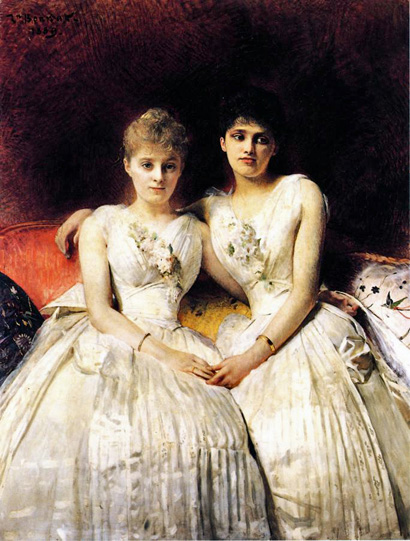
Portrait of Prince V. N. Tenishev: 1896
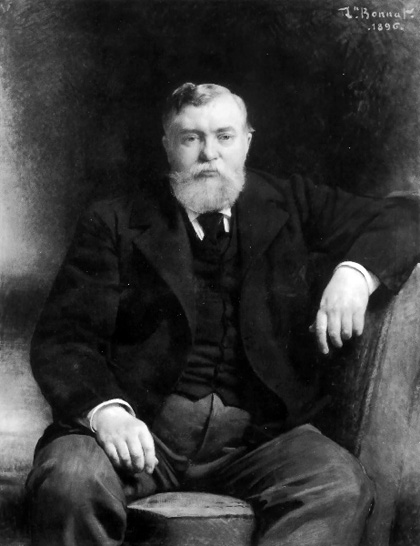
TENISHEV'S SCHOOL, a secondary education institution. It was founded by Prince V. N. Tenishev as a three-class general education high school in 1898. The course of studies was eight years including seven general classes and one specialist class. It was situated in a special building at 33-35 Mokhovaya Street. The school gave its graduates the same rights as Real school graduates. The general course, however, was wider than in other education institutions. Among the special subjects, students were taught accountancy, business arithmetic and correspondence, commodity research, and economic geography. With a semester system introduced, the school had graduates and new students admitted every six months. A strong emphasis was placed on natural sciences that were studied during the whole eight-year course, mainly in laboratories. Observation and independence were developed in students by holding practical lessons in physics, chemistry, geography, etc. An educational excursion was another popular method. Tenishev's school had its own greenhouse and observatory. Students published a magazine, Tenishev's School Student, and lithographic magazine, The Young Thought, with eight issues published in 1914-16. Among its teachers were N. I. Berezin, V. N. Verkhovsky, Vladimir V. Gippius, I. M. Grevs, E. F. Lesgaft, and A. Y. Ostrogorsky as the school director. Among the students were V. M. Zhirmunsky, O. E. Mandelstam, and V. V. Nabokov; the latter two left their reminiscences of the school. The school hall accommodated concerts and performances, as well as various meetings and conventions.
Portrait of Prince V. N. Tenishev: 1896
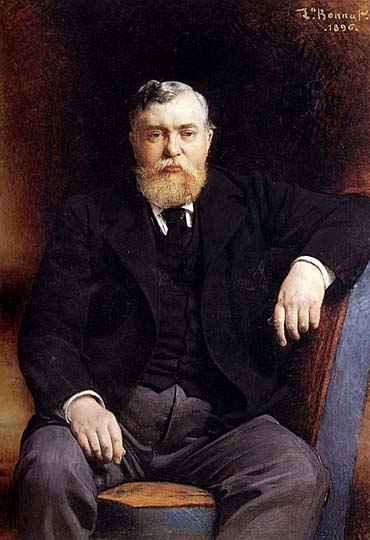
Roman Girl at a Fountain: 1875
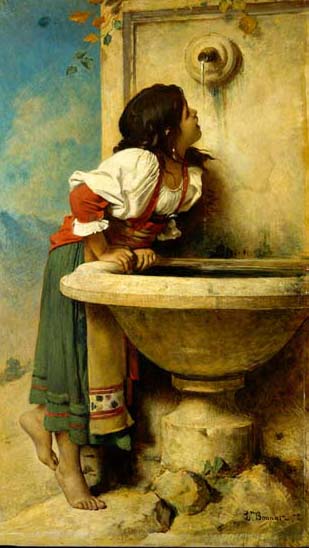
Roman Girl at a Fountain
Bonnat, the fashionable French portraitist of the last third of the nineteenth century, probably agreed to paint this genre scene for the New York collector Catharine Lorillard Wolfe about 1873. It was delivered to her Madison Avenue home two years later, where it hung in her library, along with Cabanel's three-quarter-length portrait of Wolfe herself (on view in the Museum's 19th-century galleries), which was painted the following year. In October 1885, soon before she died, Wolfe moved 'Roman Girl at a Fountain' to a specially constructed niche in her dining room.
The Barber of Suez: 1876
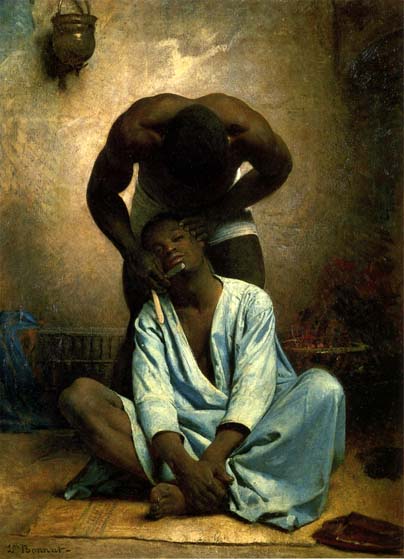
Because he destroyed all his own personal correspondence, what we know about Bonnat is usually gleaned from his students and the public records. In his wonderful book, 'The Revenge of Thomas Eakins', Sidney Kirkpatrick writes:
Bonnat went to great effort to capture the realism of this model, sometimes requiring his subjects to sit fifty or more times before completing portraits. The essential words to describe Bonnat's paintings, as well as his reaching style-as more of his students reported-were "truth and logic." . . . Bonnat's personal struggles as an artist also resonated with Eakins. Writing to his father, Eakins related how Bonnat, as a young art student, had been deeply troubled by his teacher's wanting him to paint the same way he did. Bonnat couldn't oblige. "He was better than his teacher, although he (Bonnat) was doing such bad work (at the time)," Eakins went on. "His teacher told him he would have to stop painting, and then he went to (another teacher who) . . . told him to go and be a shoemaker, that was all he was fit for. A few years more and he was as big as the biggest of them."
The Dilemma
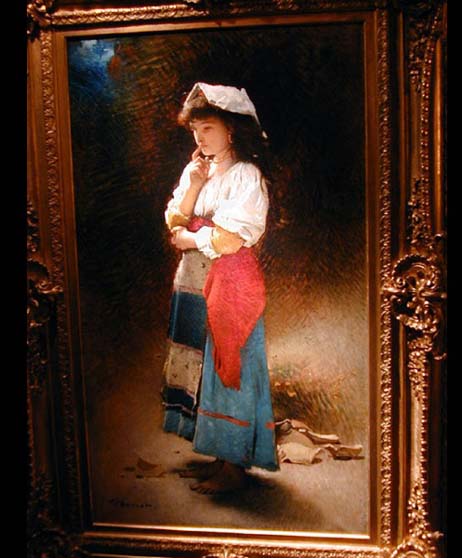
The First Mourning
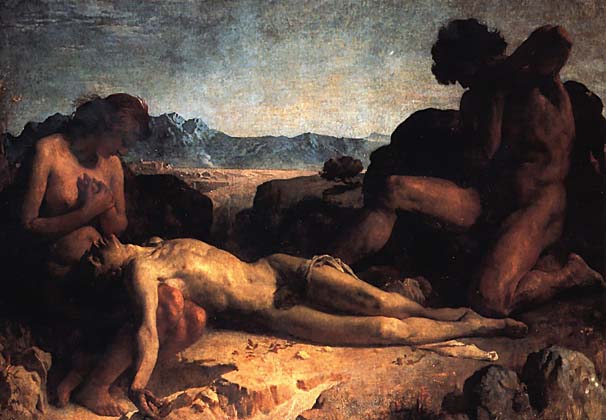
Cain and Abel
In the Hebrew Bible, Cain and Abel are the first and second sons of Adam and Eve. The Qur'an also contains this story, although Cain and Abel are not mentioned by name.
In the Greek New Testament, Cain is referred to as: in at least one translation this is rendered "from the evil one", while others have "of the evil one." Some interpreters take this to mean that Cain was literally the son of the serpent in the Garden of Eden. A parallel idea can be found in Jewish scripture, that the serpent from the Garden of Eden was father to firstborn Cain.
In all versions, Cain is a crop farmer and his younger brother Abel is a shepherd. Cain is portrayed as sinful, committing the first murder by killing his brother, after God has rejected his offerings of produce but accepted the animal sacrifices brought by Abel.
The oldest known copy of the Biblical narration is from the 1st century 'Dead Sea Scrolls'. Cain and Abel also appear in a number of other texts, and the story is the subject of various interpretations. Abel, the first murder victim, is sometimes seen as the first martyr; while Cain, the first murderer, is sometimes seen as an ancestor of evil. A few scholars suggest that the selection or extract of this story may have been based on a Sumerian story representing the conflict between nomadic shepherds and settled farmers. Others think that it may refer to the days in which agriculture began to replace the ways of the hunter-gatherer.
Allusions to Cain and Abel as an archetype of fratricide persist in numerous references and retellings, through medieval art and Shakespearean works up to present day fiction.
The Little Sister of the Artist: 1850
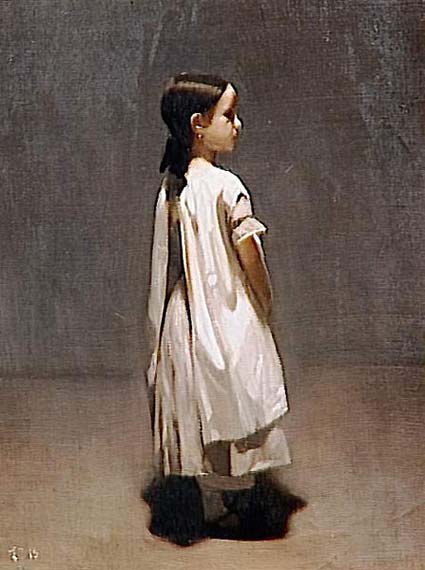
The Raising of Lazarus
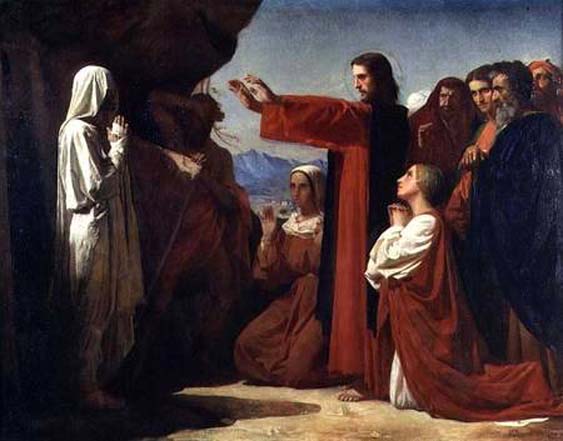
Victor Hugo (1802-1885)
.jpg)
Novelist, poet, and dramatist, the most important of French Romantic writers. Victor Hugo developed his own version of the historical novel, combining concrete, historical details with vivid, melodramatic, even feverish imagination. His best-known works include The Hunchback of Notre Dame (1831) and Les Misérables (1862).
"How came it that this prudent, economical man was also generous? That this chaste adolescent, this model father, grew to be, in his last years, an ageing faun? That this legitimist changed, first into a Bonapartist, only, later still, to be hailed as the grandfather of the Republic? That this pacifist could sing, better than anybody, of the glories of the flags of Wagram? That this bourgeois in the eyes of other bourgeois came to assume the stature of a rebel? These are the questions that every biographer of Victor Hugo must answer." (from Olympio: The Life of Victor Hugo by André Maurois, 1954)
Victor Hugo - Wikipedia, the free encyclopedia
Notre-Dame de Paris by Victor Hugo - Free eBook
Les Miserables by Victor Hugo - Free eBook
Return to Pagina Artis
Return to Bruce and Bobbie's Main Page.